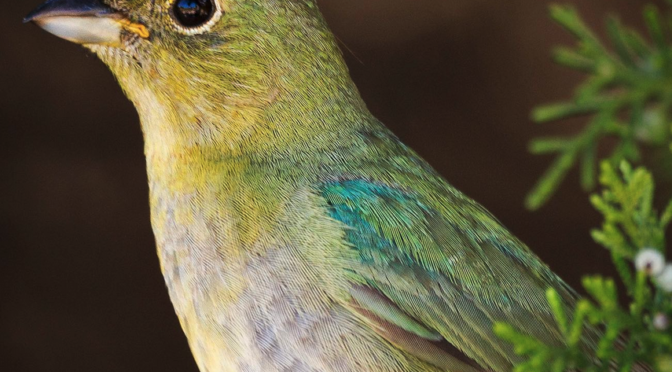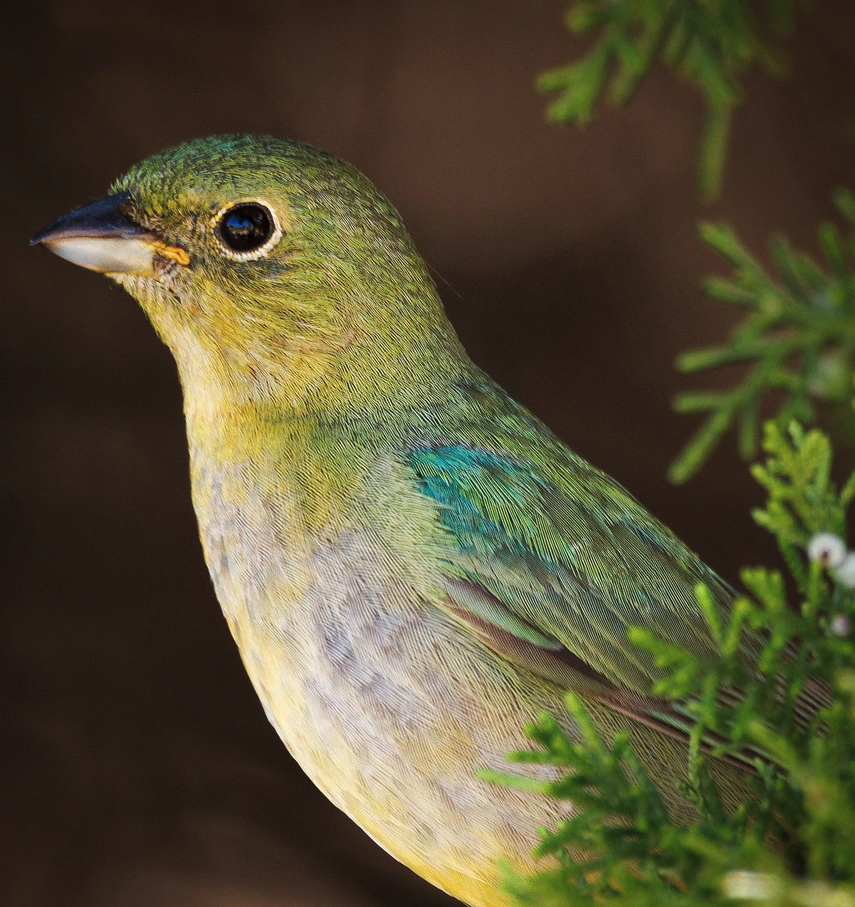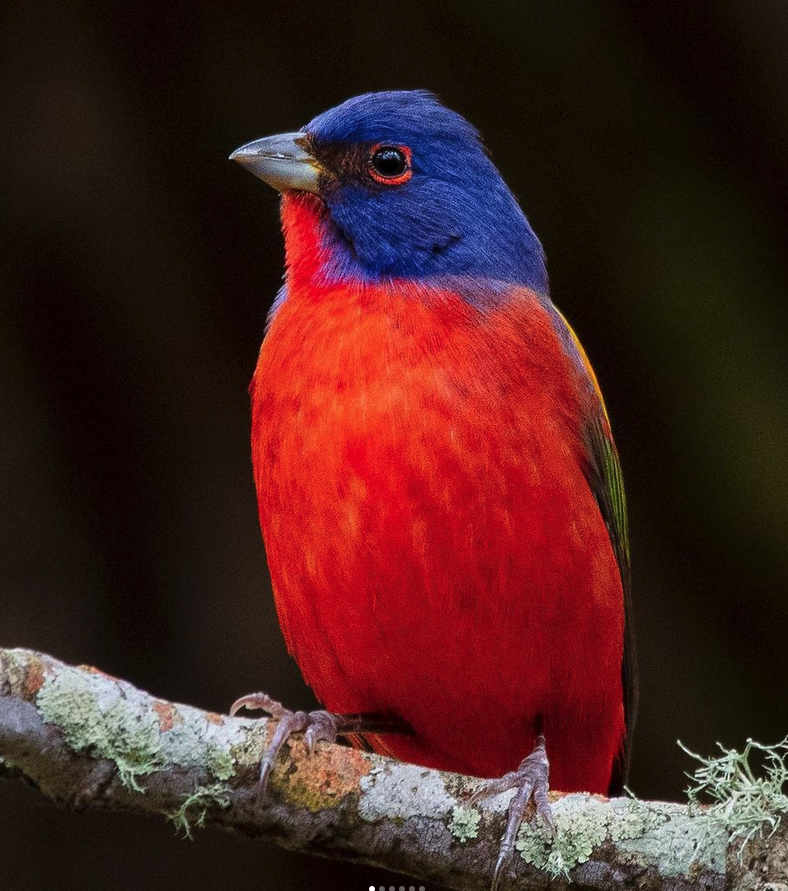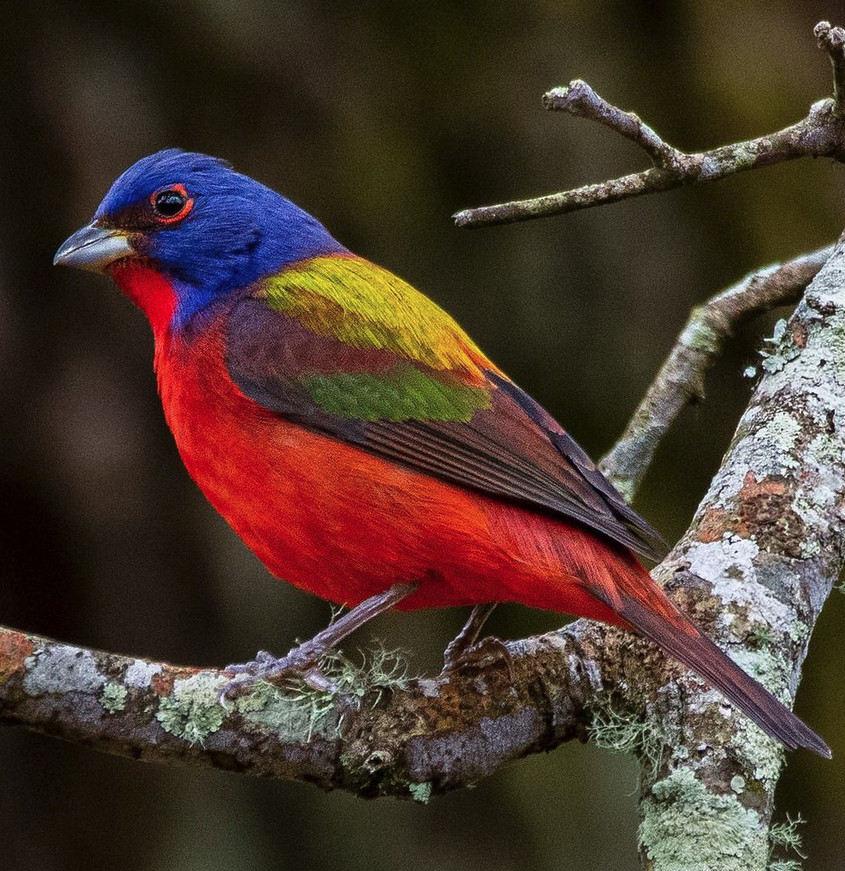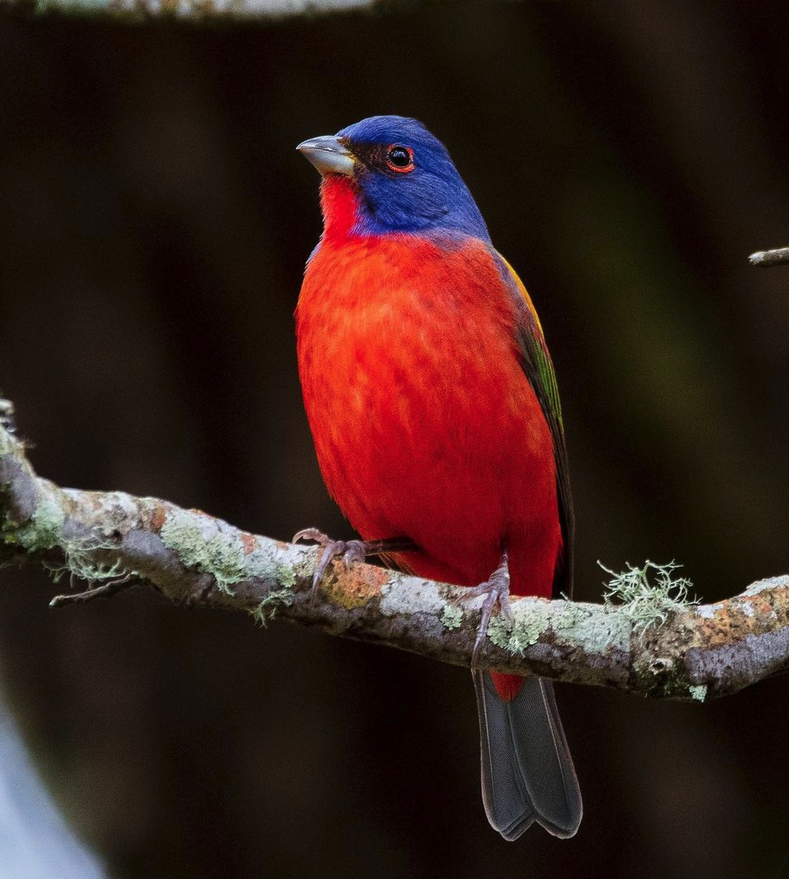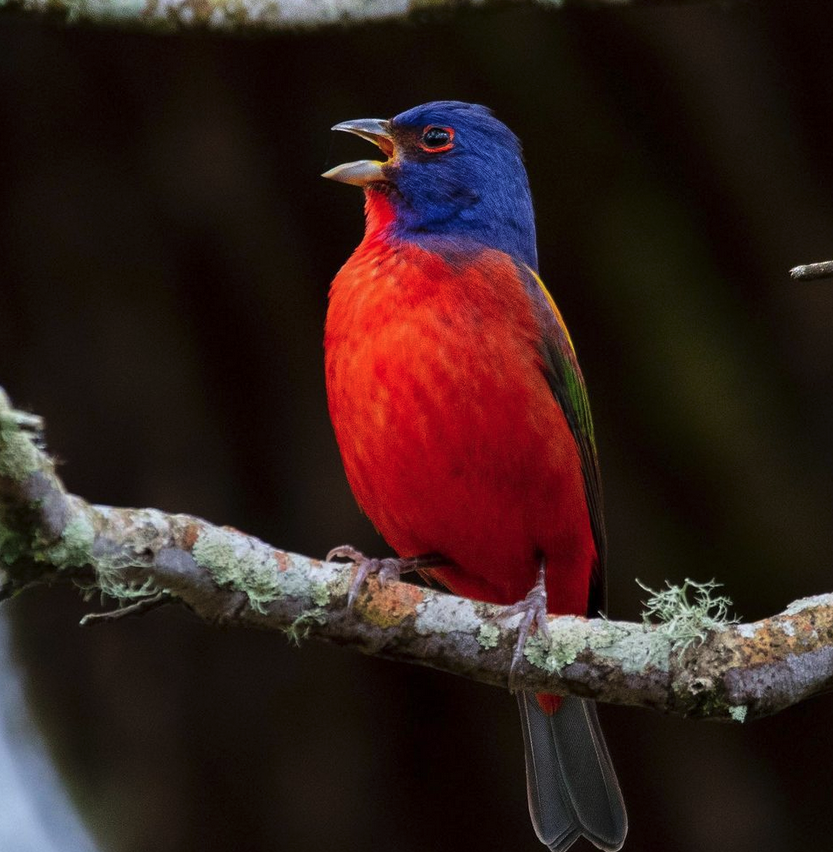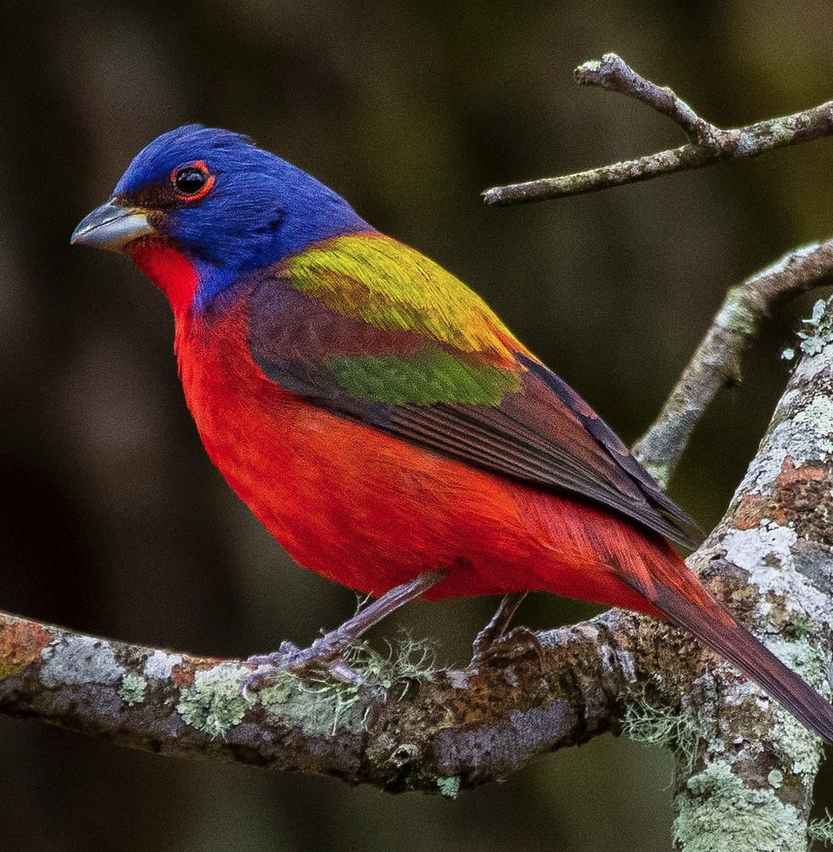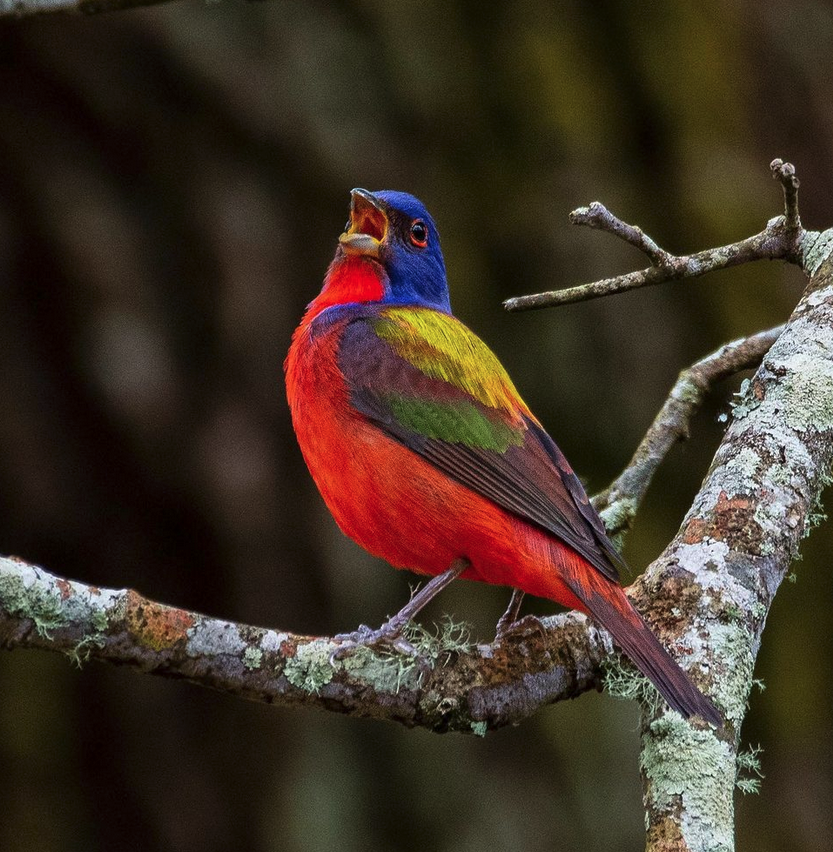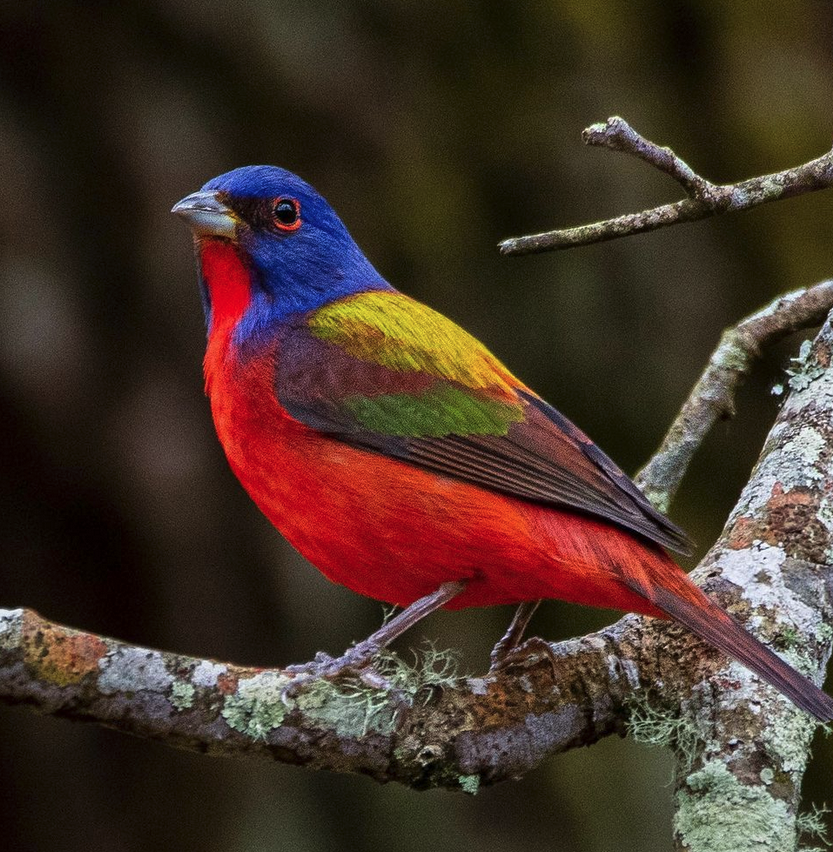By Sally Siko
With every color of the rainbow showing in his plumage, the Painted Bunting is truly a stunning bird to photograph and see in real life.

But what makes the male Painted Buntings plumage so vibrant? As it turns out, it’s a combination of feather structure and three pigments which contribute to the colorful feathers found on these handsome birds: melanin, carotenoids and porphyrins.

*Melanin-Naturally produced by the birds displays as black, brown, red and pale yellow in feathers.
* Carotenoids- Birds which display the reds, oranges and yellows in their plumage is attributed to carotenoids when they eat specific plants or insects, like spiders or grasshoppers, which eat the carotenoids the birds need for their feather colors.
* Porphyrins- A modified amino acid producing pink, brown, red and green pigmentation.
*Feather structure-That bright blue to violet head color is actually a trick of the light. When sunlight passes through certain proteins and pockets of air trapped between feather barbules — tiny filaments extending from the barbs of a feather — it refracts, just like light passing through a prism.

Unfortunately since winter is here, most of the Painted Buntings have migrated south.
They will return to North & South Carolina in May and stick around through September-ish.
Look for these guys in our coastal areas in scrubby wet habitats, in the scrub brush just behind the sand dune line, at the edges of woods and flying over open tall-grass fields.
Btw, I’m planning on heading back out later this year to share these beauties with my tour guests so I’ve added new trips in 2024 to find the Painted Bunting in NC & SC.
If you’d like to join me, check out the link in my bio for more info and available group tour dates or feel free to shoot me a DM anytime if ya have any questions 🙂
Photos by @sally_siko of @bestlife_birding on my mighty mirrorless monster, the @canonusa #R5


